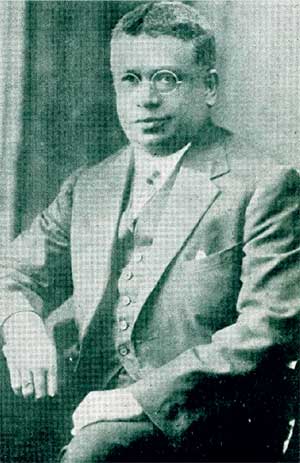Features
D.J. Wimalasurendra the founding father of hydroelectricity in Sri Lanka Great sons of Galle

In the year 1918, D. J. Wimalasurendra read before the Engineering Association, a paper titled ‘The Economics of Power Utilization in Ceylon’, embodying his exhaustive investigations, most of which were done at his own expense.
When he referred to at length the benefits that the country would derive industrially and agriculturally by harnessing the waters of the River Mahaveli, Kehelgamu Oya and Maskeli Oya to produce hydroelectricity, some of the European engineers dismissed his thesis as “Journeys to the realm of fantasy”. Fortunately for our motherland, he had the unstinting support of the eminent leaders of the day and the national press.
From then onwards what was uppermost in his mind was the harnessing of the Laxapana waters to produce hydroelectricity and to supply ‘lakhs of lights’ as the name Laxapana implies. Nine long years later, a project based on the original proposals of Wimalasurendra but ill-advisedly modified by the European engineers was started by the British Government. Three years later it had to be abandoned after spending nearly three and half million rupees. Had Wimalasurendra been entrusted with the task it would have been a success.
Undaunted, Wimalasurendra pressed the government of the day to resume the project, fearing that it would be shelved forever or passed onto a foreign combine. With this in view, he briefed D. S. Senanayake of the proposed sale of a vital section to Whitewall Securities Corporation. When D. S. exposed this fact in the Legislative Council, the European rulers gave 24 hours notice to Wimalasurendra, to retire.
By now Wimalasurendra realized that he had lost a battle but not the war itself. With that in view, he entered the State Council in 1931, from Ratnapura. In the State Council, he urged the Government to restart the project which was resumed at last in the year 1938. On October 30, 1950, Sri Lanka was illuminated with hydropower for the first time.
No sphere of engineering activity escaped this genius. And, when the construction of the railway line from Bandarawela to Badulla baffled the white engineers, Wimalasurendra who was sent there by the Government authorities, performed the “looping the loop” at Demodera and reduced the proposed distance by three and half miles!
He also designed the gem-studded 24 foot gold plated pinnacle of the Ruvanweliseya Dagaba, which held the Chudamanikya. It was a labour of love.
When he was serving as the District Engineer of Uda Pussellawa, he received a telegram from his friend the newspaper tycoon D. R. Wijewardena, who had bought a new rotary press and the foreign engineer who had come from England to install it had failed to do it properly and the press had begun to deliver the newspapers in shreds! Wijewardena had consulted many engineers in Colombo but none of them could set it right.
As soon as Wimalasurendra arrived, he took one look at the machine and called for its book of instruction. He had glanced through the book, and with a thinly disguised smile of sarcasm on his face, fidgeted with some screws. And presto the newspapers came out at the rate of 40,000 copies an hour.
He also translated many Pali Buddhist texts to the German language. Indeed he was a great son of a great father, Mudliyar Don Juan Dewapura Wimalasurendra, who was a master craftsman, personally commended by Queen Victoria. Wimalasurendra was born on September 17, 1874, at Muhandiramgewatta in Galwadugoda, Galle. In the year 1926, he provided electricity to his home town. He also constructed the Hiyare reservoir to give pipe borne to the Galle town. Notable improvements to the Galle Harbour were also made by him.
The Government of the day, issued a commemorative stamp to mark his birth centennial. The new Laxapana power station was also named after him. The Galle Municipal Council renamed Humes Road which passes through his village, as D. J. Wimalasurendra Mawatha, while the grateful people of Galle erected a life-size statue of him.
Dewapura Jayasena Wimalasurendra, the patriotic son and giver of light, passed into luminous sleep on August 10, 1953 and is the living light in a free and independent Lanka!